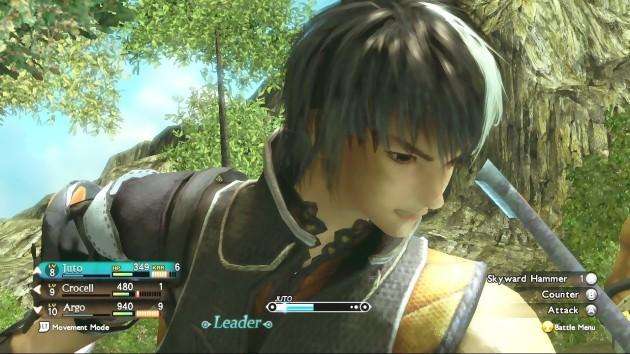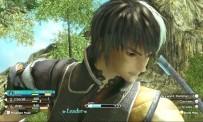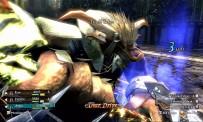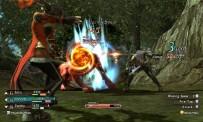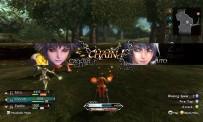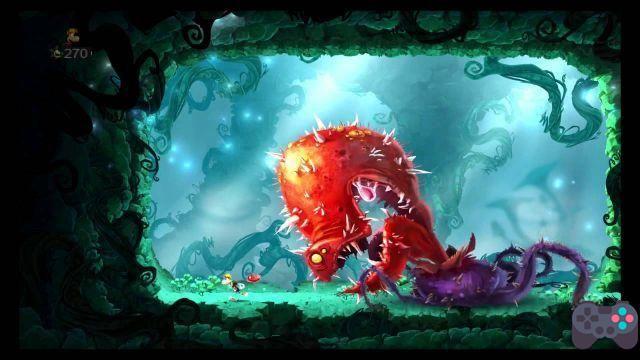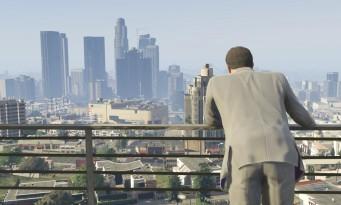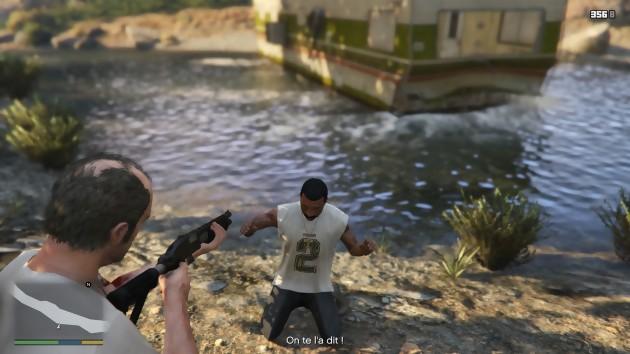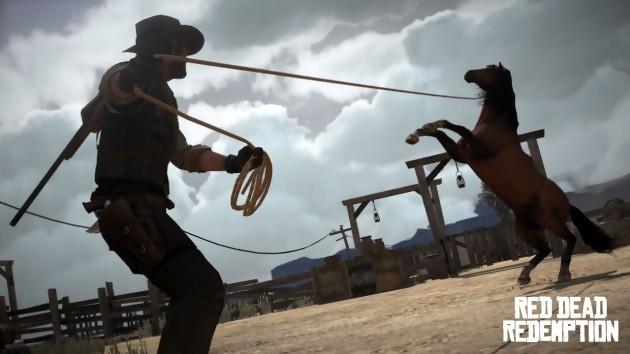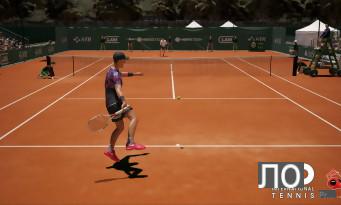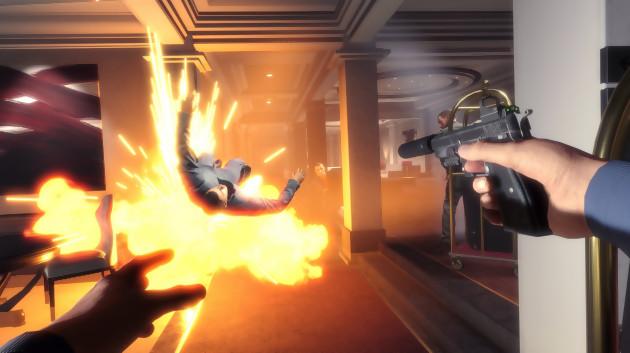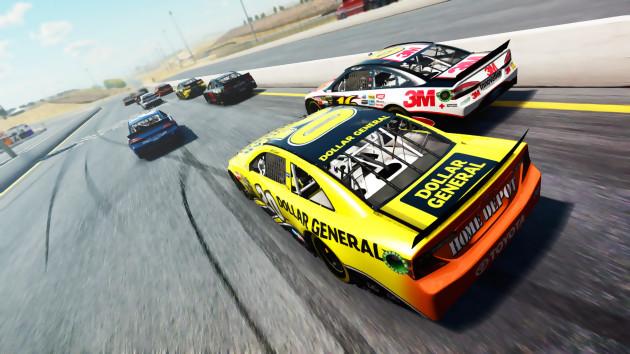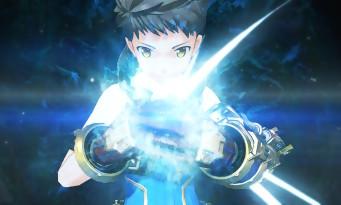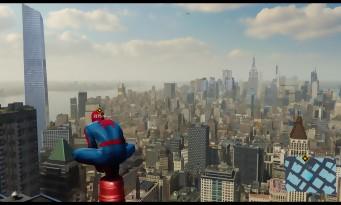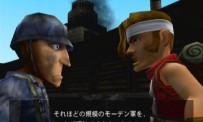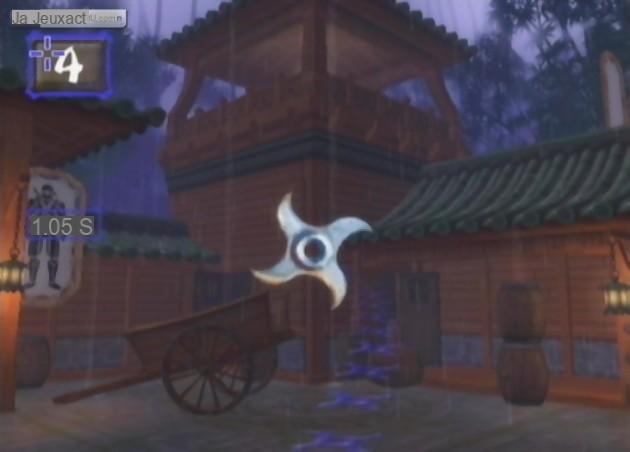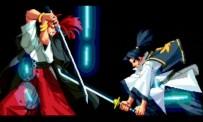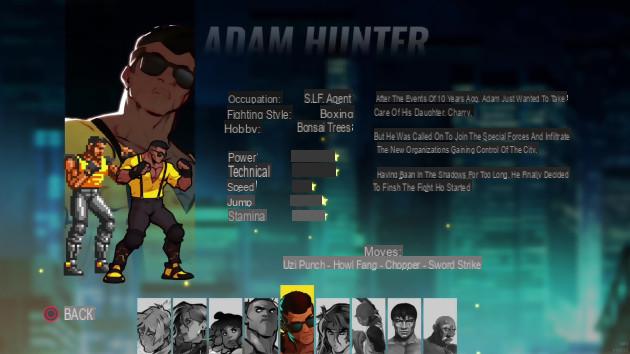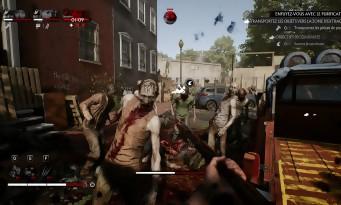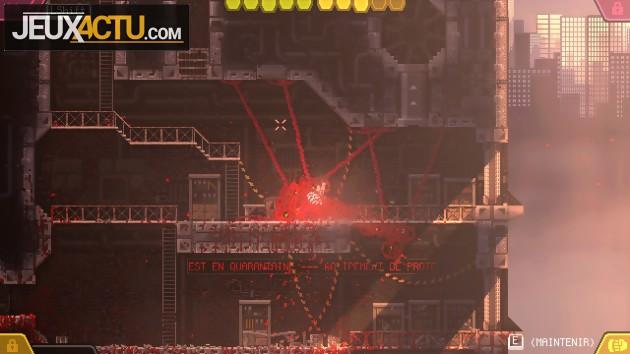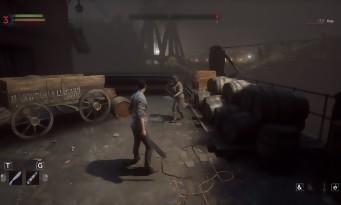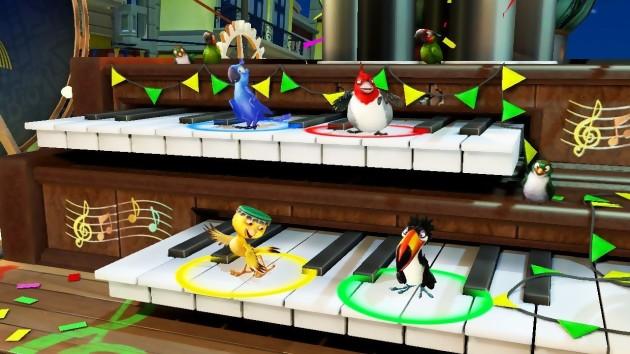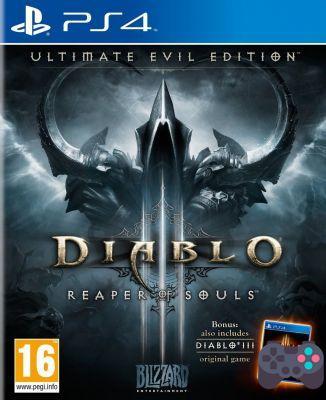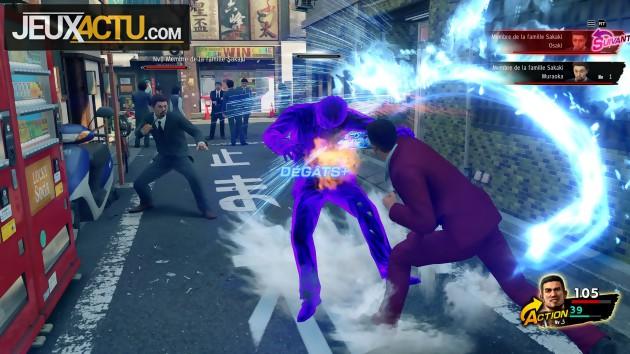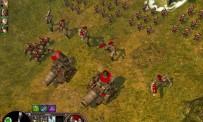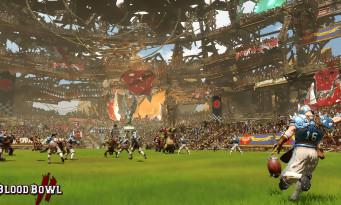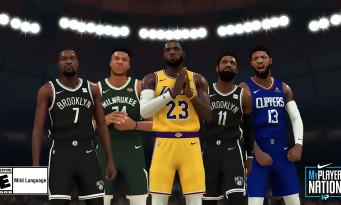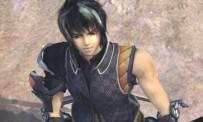 The story begins with the painful awakening of a young man with amnesia on a lost island, placed under the thumb of a loving but somewhat abrupt older sister. If this starting pitch may be suitable for 70% of RPGs of the 16 or even 32-bit era, it is also that of Magna Carta II. The interest is then to admire how the title published by Namco Bandai will succeed in getting out of this first cliché. A challenge that he will never really be able to fulfill despite a few twists and turns reviving interest for a long hour. Slight start before falling back into a canvas woven from all the usual clichés of the lazy Japanese RPG. Between the ingenuous magician with a big chest, here partially justified by Hyung-Tae Kim's own style, the hero who is not really a hero but in fact is and the heavyweight with a big heart hiding secrets about his past, it's a real skewer of generic characters that is offered to you. A finding that does not prevent some speakers from leaking snippets of a worked psychology, but which never goes so far as to make them captivating. The storyline follows a similar path, reserving some gripping moments of bravery and allowing itself to be absent-mindedly followed without ever really stirring the player's imagination or astonishment. Classicism is not strictly speaking a defect when precisely it only serves as a basis for a development of the characters or the much richer plot, like a Tales of Vesperia. But here, the imaginative softness bogs the game down in habits that now really harm a genre in general and Magna Carta II in particular. But if Softmax is not a great storyteller, he turns out to be a formidable gameplay designer.
The story begins with the painful awakening of a young man with amnesia on a lost island, placed under the thumb of a loving but somewhat abrupt older sister. If this starting pitch may be suitable for 70% of RPGs of the 16 or even 32-bit era, it is also that of Magna Carta II. The interest is then to admire how the title published by Namco Bandai will succeed in getting out of this first cliché. A challenge that he will never really be able to fulfill despite a few twists and turns reviving interest for a long hour. Slight start before falling back into a canvas woven from all the usual clichés of the lazy Japanese RPG. Between the ingenuous magician with a big chest, here partially justified by Hyung-Tae Kim's own style, the hero who is not really a hero but in fact is and the heavyweight with a big heart hiding secrets about his past, it's a real skewer of generic characters that is offered to you. A finding that does not prevent some speakers from leaking snippets of a worked psychology, but which never goes so far as to make them captivating. The storyline follows a similar path, reserving some gripping moments of bravery and allowing itself to be absent-mindedly followed without ever really stirring the player's imagination or astonishment. Classicism is not strictly speaking a defect when precisely it only serves as a basis for a development of the characters or the much richer plot, like a Tales of Vesperia. But here, the imaginative softness bogs the game down in habits that now really harm a genre in general and Magna Carta II in particular. But if Softmax is not a great storyteller, he turns out to be a formidable gameplay designer.
The battle map
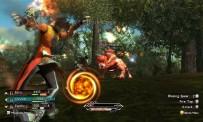 To quickly summarize the gameplay of Magna Carta II, it is broadly a successful variation of that of Final Fantasy XII. At the controls of a group of 3 characters among the 6 available during your adventure, you evolve in vast open areas; the title nevertheless retaining a fixed world map unlike the Square-Enix title. During your bucolic wanderings, you will often come across groups of enemies that you will have to face directly on the progression zone, without transition. A very pleasant feeling of freedom, similar to that found in MMOs, but which in Magna Carta II offers much more advanced interactivity. In fact, it would be easy to think that Softmax has inserted into its combat system everything that was lacking in that of Final Fantasy XII. Indeed, the clashes leave a lot to the immediate action, A-RPG tendency and require a certain strategy. The system effectively manages the possibility of attacking an enemy from behind in order to inflict additional damage and above all takes into account the distance allowing you to move away for a few moments while you review your tactics. Because under the drumming side of button "A" hides a surprising subtlety.
To quickly summarize the gameplay of Magna Carta II, it is broadly a successful variation of that of Final Fantasy XII. At the controls of a group of 3 characters among the 6 available during your adventure, you evolve in vast open areas; the title nevertheless retaining a fixed world map unlike the Square-Enix title. During your bucolic wanderings, you will often come across groups of enemies that you will have to face directly on the progression zone, without transition. A very pleasant feeling of freedom, similar to that found in MMOs, but which in Magna Carta II offers much more advanced interactivity. In fact, it would be easy to think that Softmax has inserted into its combat system everything that was lacking in that of Final Fantasy XII. Indeed, the clashes leave a lot to the immediate action, A-RPG tendency and require a certain strategy. The system effectively manages the possibility of attacking an enemy from behind in order to inflict additional damage and above all takes into account the distance allowing you to move away for a few moments while you review your tactics. Because under the drumming side of button "A" hides a surprising subtlety.
To quickly summarize the gameplay of Magna Carta II, it is basically a successful variation of that of Final Fantasy XII.
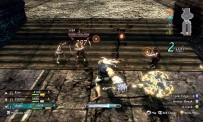 Everything is based on the principle of Overactivity, a state appearing after a small number of weak blows delivered. The more a character chains normal attacks, the more his bar of "Kan" (a kind of vital energy) fills up. Once it is full enough, it is possible to trigger a special assault (often full of fury and well staged) that you can easily change in the middle of a fight. The counterpart is that if you insist too much on executing small attacks, your warrior becomes overheated and loses all possibility of action for long seconds, leaving you particularly vulnerable. However, if you manage to perform a special move just before being knocked down by this overheat, you have a short opportunity to pass this state to another member with a simple press of one of the directions of the D-Pad. This manipulation immediately gives your target enough power to also chain a deadly attack and above all reset your own Overactivity gauge to zero (if your teammate has enough "kans"). You can also switch from one warrior to another in order to increase their strength in the same way without taking into account the "Kans" of each, but on the other hand you will keep your overactivity rate. A principle of chains of actions that is quite complex to learn during the first hours but which proves to be very effective once mastered, giving the clashes a spectacular side and a strategic side requiring you to support your concentration in a very engaging way. The strength of this system is obviously the management of the same composure of the player always trying to push the overactivity further.
Everything is based on the principle of Overactivity, a state appearing after a small number of weak blows delivered. The more a character chains normal attacks, the more his bar of "Kan" (a kind of vital energy) fills up. Once it is full enough, it is possible to trigger a special assault (often full of fury and well staged) that you can easily change in the middle of a fight. The counterpart is that if you insist too much on executing small attacks, your warrior becomes overheated and loses all possibility of action for long seconds, leaving you particularly vulnerable. However, if you manage to perform a special move just before being knocked down by this overheat, you have a short opportunity to pass this state to another member with a simple press of one of the directions of the D-Pad. This manipulation immediately gives your target enough power to also chain a deadly attack and above all reset your own Overactivity gauge to zero (if your teammate has enough "kans"). You can also switch from one warrior to another in order to increase their strength in the same way without taking into account the "Kans" of each, but on the other hand you will keep your overactivity rate. A principle of chains of actions that is quite complex to learn during the first hours but which proves to be very effective once mastered, giving the clashes a spectacular side and a strategic side requiring you to support your concentration in a very engaging way. The strength of this system is obviously the management of the same composure of the player always trying to push the overactivity further.
The Magna Carta Curse
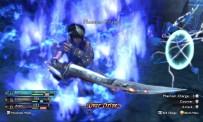 A deep and complete principle which shows a certain maturity on the part of Softmax on this precise point, much less complicated than the combat system of the first opus. One of the few good ideas of the latter, namely the importance of the environment on spells, has been kept involving the player a choice on the choice of this or that mage to integrate into his ranks. Indeed, poor Célestine will have a hard time being of great help to you in a fire-oriented context, as she mainly handles water. Finally, each character has two types of mastered weapons, each containing its own skill tree that you develop with Skill Points rewarding your victory over an enemy. Fundamentally different, your weapons also contain specificities with which you will have to deal depending on the situation. As it stands, the effectiveness of this system remains relative as the points earned require significant combat time and therefore push to specialize in a single type of tool. Eyeing the side of Final Fantasy VII, Magna Carta II also includes its system of "materials" giving you the opportunity to acquire status bonuses through gems, the Kamonds. The latter fit into slots varying according to the model of the weapon in a classic way and can also be used to create equipment thanks to "models" found in chests and other secret places. A very common management aspect which shows the aspirations of the title, namely to be a square Magna Carta, sacrificing a little bit the dubious originality for an accessibility housing a more significant, the combat system.
A deep and complete principle which shows a certain maturity on the part of Softmax on this precise point, much less complicated than the combat system of the first opus. One of the few good ideas of the latter, namely the importance of the environment on spells, has been kept involving the player a choice on the choice of this or that mage to integrate into his ranks. Indeed, poor Célestine will have a hard time being of great help to you in a fire-oriented context, as she mainly handles water. Finally, each character has two types of mastered weapons, each containing its own skill tree that you develop with Skill Points rewarding your victory over an enemy. Fundamentally different, your weapons also contain specificities with which you will have to deal depending on the situation. As it stands, the effectiveness of this system remains relative as the points earned require significant combat time and therefore push to specialize in a single type of tool. Eyeing the side of Final Fantasy VII, Magna Carta II also includes its system of "materials" giving you the opportunity to acquire status bonuses through gems, the Kamonds. The latter fit into slots varying according to the model of the weapon in a classic way and can also be used to create equipment thanks to "models" found in chests and other secret places. A very common management aspect which shows the aspirations of the title, namely to be a square Magna Carta, sacrificing a little bit the dubious originality for an accessibility housing a more significant, the combat system.
Very convincing in its combat system but much less in its management aspect, Magna Carta 2 could have been a simply enjoyable title if it hadn't had to suffer from mistakes in content and form that are truly damaging for an RPG. "
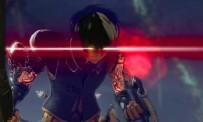 Very convincing in its combat system but much less in its management aspect, Magna Carta 2 could have been a simply enjoyable title if it hadn't had to suffer from mistakes in content and form that are truly damaging for an RPG. Demonstrating that Japanese role-playing games on current home consoles can still benefit from a very good level of artistic direction - in particular work on architecture with very varied inspirations and an impressive richness of forms - Magna Carta II suffers in revenge from a technical point of view. Displaying sometimes simplistic textures and characters with porcelain skin, the game also uses a very strong distance blur, so much so that you will have the impression of moving in a giant aquarium. Even Hyung-Tae Kim's very fine on-paper chara-design disappears under an Unreal Engine that obviously continues to cause problems for Japanese developers. An observation that it will be easy for you to make during the dialogue scenes displaying the various characters of the game on the same level. The other observation concerns the dramatic weakness of the staging of the script phases causing the moments, however important. Similarly, the events follow one another without much passion, often forcing you to back and forth not really exhilarating. It is during the latter that you will be able to carry out the many side quests in the game, the only interest of which remains obtaining useful and/or rare objects. Seeming to come directly from World of Warcraft and consorts, they will generally ask you to kill X creatures or to bring such items to such person for uninteresting reasons. Effectively inflating the basic lifespan, the latter do not bring much in the end and chop even more a title already singularly lacking in rhythm. Far from the guilty silliness of a Star Ocean: The Last Hope, Magna Carta II offers a universe with a rich background and a frame that is certainly ultra-classic but which never really puts off. Embellished with its original and well-thought-out combat system, it could become the quality outsider at the end of this miserly year in RPG on home consoles. Unfortunately for him, he has been accumulating the customary shortcomings of the genre for 5 or 6 years and is struggling to hide them. Square but unsurprising, Magna Carta II is another ordinary RPG with perhaps charming attire but very real naivety.
Very convincing in its combat system but much less in its management aspect, Magna Carta 2 could have been a simply enjoyable title if it hadn't had to suffer from mistakes in content and form that are truly damaging for an RPG. Demonstrating that Japanese role-playing games on current home consoles can still benefit from a very good level of artistic direction - in particular work on architecture with very varied inspirations and an impressive richness of forms - Magna Carta II suffers in revenge from a technical point of view. Displaying sometimes simplistic textures and characters with porcelain skin, the game also uses a very strong distance blur, so much so that you will have the impression of moving in a giant aquarium. Even Hyung-Tae Kim's very fine on-paper chara-design disappears under an Unreal Engine that obviously continues to cause problems for Japanese developers. An observation that it will be easy for you to make during the dialogue scenes displaying the various characters of the game on the same level. The other observation concerns the dramatic weakness of the staging of the script phases causing the moments, however important. Similarly, the events follow one another without much passion, often forcing you to back and forth not really exhilarating. It is during the latter that you will be able to carry out the many side quests in the game, the only interest of which remains obtaining useful and/or rare objects. Seeming to come directly from World of Warcraft and consorts, they will generally ask you to kill X creatures or to bring such items to such person for uninteresting reasons. Effectively inflating the basic lifespan, the latter do not bring much in the end and chop even more a title already singularly lacking in rhythm. Far from the guilty silliness of a Star Ocean: The Last Hope, Magna Carta II offers a universe with a rich background and a frame that is certainly ultra-classic but which never really puts off. Embellished with its original and well-thought-out combat system, it could become the quality outsider at the end of this miserly year in RPG on home consoles. Unfortunately for him, he has been accumulating the customary shortcomings of the genre for 5 or 6 years and is struggling to hide them. Square but unsurprising, Magna Carta II is another ordinary RPG with perhaps charming attire but very real naivety.
